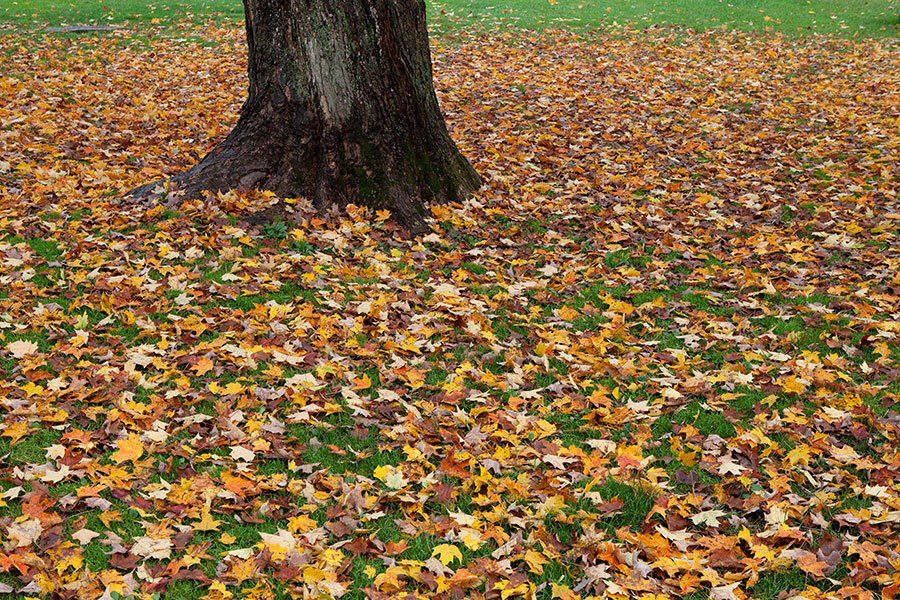Feed your garden with fall leaves
Loading...
Everyone appreciates the colorful kaleidoscope of autumn leaves on trees, but homeowners may also groan, thinking of all the raking or blowing to come. Yet gardeners don’t mind, knowing that this fall’s leaves can help produce outstanding cucumbers, tomatoes, and beans next summer.
Leaves are one of the best ingredients for healthy vegetable garden soil. They contain all three major plant nutrients (nitrogen, potassium, phosphorus), plus mineral micronutrients that plants need. These nutrients and micronutrients become available to plants through decomposition by soil microbes. Earthworms pull leaf pieces down from the surface, eating them as they tunnel through soil. The worms aerate and fertilize the soil with their castings (poop), making nutrients available to smaller soil critters and microbes, including the beneficial bacteria and fungi that play a major role in the decomposition and growth processes.
If you start building healthy soil now, using leaves to feed the worms and microbes, they will do the heavy lifting for you. By the time spring arrives, you’ll be ready to plant without backbreaking digging or rototilling, which rips up the tapestry of soil life. If you have plenty of trees, you’re ready to get started. If you don’t, many communities collect leaves and provide them free, or at low cost, to residents.
To speed up the alchemy in your soil, it’s best to shred the leaves. Unshredded leaves take much longer to break down when forked in, which means nutrients won’t be readily available, and they can form an unwieldy, wet mat on the bed’s surface.
To shred them, you can mow over leaves several times and then rake them up. Some people use weed whackers inside a trash can full of leaves. You and the kids might have fun jumping up and down on bags of dry leaves to break them up. But I find the easiest way to transform big piles of leaves into nicely shredded leaves is to use a leaf vacuum/shredder, usually the reverse setting on a leaf blower. It’s not a very heavy or expensive tool; I paid about $100, and mine has lasted 10 years.
Creating healthy soil for your vegetable garden is simple. Shred the leaves, fork them in, water well in the fall, and, if you live in a dry place, mulch your beds with hay or straw. Do this every year and your garden soil will just get better and better.
I fork or hand dig a lot of shredded leaves into already soft beds each fall along with grass clippings, compost, or whatever I’ve got, and water them well. Some gardeners dig trenches in the beds, fill them with shredded leaves, and cover them with soil. I cover my beds with flakes, or intact sections, of a bale of hay. Spoiled, moldy hay works fine and is cheapest. This creates a moister environment for the soil critters, and wonderfully dark, crumbly soil that is full of worms come spring. The trick is to apply it thick enough (intact 5- to 6-inch-thick flakes) so that any lingering seeds won’t sprout.
To make a new bed using fall leaves, mow any grass short and cover it with cardboard. Wet the cardboard, then alternate several layers of compost and shredded leaves on top, wetting each one. Top with more leaves and hay, or straw if you have it. The volume will decrease quite a bit over winter. You should be able to plant through the cardboard by early next summer.
Many YouTube videos show this “lasagna gardening” method of creating new veggie gardens with leaves. It’s an easy, inexpensive way to put those fall leaves to good use.





